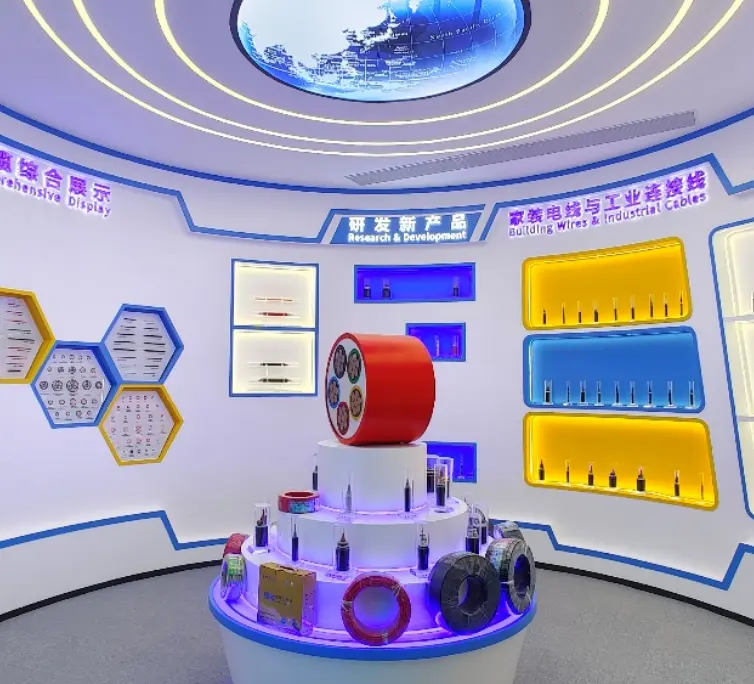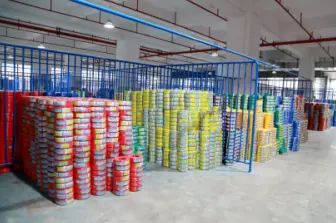Flame-Retardant Cables vs. Fire-Resistant Cables: Different Applications for the Same Fire Protection
What should you choose: flame-retardant or fire-resistant cables? A wrong choice in cable type nearly caused a catastrophe during a shopping mall's electrical distribution project... "A single word makes a world of difference in performance!" This article uses real-life cases to thoroughly explain the core differences and selection logic of these two types of cables.
Essential Difference: Different Fire Protection Goals
Flame-Retardant Cable: The "Isolation Wall" for Fire Spread
Flame-retardant cables, as the name suggests, are primarily meant to prevent the spread of flames. The principle is to add flame retardants containing halogens, phosphorus, nitrogen, boron, and other elements into the insulation layer and sheath materials of the cables.
Flame-retardant cables are widely used in densely populated areas such as shopping malls, theaters, and high-rise residential buildings. In these places, if a fire breaks out, flame-retardant cables can reduce the risk of fire spreading along the cable lines, buy time for evacuation, and reduce property damage caused by the fire. In general industrial settings, flame-retardant cables can also meet basic fire protection requirements, preventing fires caused by electrical faults from spreading, and protecting equipment and property safety.
Fire-Resistant Cable: The "Warrior" Maintaining Power Supply
Fire-resistant cables focus on "fire resistance," relying on special fire-resistant mica tape as the insulating material. When a fire occurs, even if the external temperature rises sharply, the mica tape can maintain the insulation performance of the internal wires for an extended period, ensuring that the circuit continues to be powered for a certain duration.
The fire resistance performance of fire-resistant cables is measured by the fire resistance time. Common fire-resistant cables need to ensure continuous power supply for 90 minutes or even longer in high-temperature environments of 750℃ to 800℃, maintaining normal transmission of signals or power to meet the emergency power needs of firefighting systems.
Fire-resistant cables are crucial for key lines that must continue to be powered during a fire, such as power supply lines for fire elevators, fire pumps, fire alarm systems, and emergency lighting.
Fatal Misunderstandings: These Scenarios Should Never Mix Them Up!
Case 1
A warehouse used flame-retardant cables instead of fire-resistant cables.
Consequence:In the initial stages of the fire, the fire did not spread, but high temperatures caused the cable insulation to fail, leading to the shutdown of the smoke exhaust system.
Lesson:"Flame retardant ≠ high temperature resistance"! Fire-resistant cables are the "last line of defense" for escape-critical systems.
Case 2
A parking garage blindly opted for high-grade fire-resistant cables.
Waste Point:There is no need to endure ultra-high temperatures in ordinary areas, increasing the costs by 35% due to overconfiguration.
How to Choose Between Flame-Retardant and Fire-Resistant Cables?
Choose Flame-Retardant Cables
For densely populated areas to prevent the spread of fire
Building Shafts: Cable shafts and duct shafts in high-rise buildings (to prevent the "chimney effect" from accelerating the fire spread);
Subway Tunnels: Enclosed spaces with limited ventilation (flame retardancy can reduce the spread of toxic smoke);
Data Centers: Dense server cabinet areas (to avoid a chain reaction from bundles of burning cables).
For ordinary power distribution in non-critical systems
Office Building General Lighting: Daily power supply in non-escape routes;
Underground Parking Garage Regular Lines: Power supply to non-firefighting-related equipment;
Factory Ordinary Production Lines: Areas without high temperature/explosion risks.
For large-scale installations sensitive to costs
Residential Community Public Lines: Balancing safety and cost-effectiveness;
Shopping Mall General Shop Power Supply: Non-core escape route areas.
Choose Fire-Resistant Cables
For "Life Systems" that must maintain power supply during a fire
Firefighting Equipment: Fire pumps, sprinkler systems, smoke exhaust fans (to ensure continuous firefighting capability);
Emergency Lighting: Safety exit indicators, evacuation route lighting (to ensure visibility during evacuation);
Alarm Systems: Fire alarms, broadcasting systems (to promptly relay emergency information).
For key control lines in high-risk environments
Hospital Operating Rooms: Power supply for life support equipment such as ventilators and ECMO;
Petrochemical Explosion-Proof Areas: Interlock control systems, emergency shut-off valve power supply;
Nuclear Power Plant Containment: Control cables for the accident cooling system.
For sites with dense population and difficult evacuation
Subway Platforms: Emergency power for turnstiles and elevators;
Large Stadiums: Evacuation guidance systems, broadcasting lines;
High-Rise Hotel Guest Room Floors: Lines that must maintain communication during a fire.
Flame-Retardant + Fire-Resistant Dual Configuration
Core Escape Routes
Hospital Corridors: Lighting + call systems (flame retardant to prevent spread, fire resistant to ensure power supply).
Airport Terminal Corridors: Catering to the characteristics of densely populated areas and long evacuation distances.
Super High-Rise Buildings
Refuge Floor Power Distribution Lines: Both preventing fire spread to upper floors and ensuring power supply to refuge facilities.
Comprehensive Utility Galleries
Main Lines in Electrical Compartments: Preventing fire spread to adjacent compartments while maintaining the operation of monitoring systems.
Latest News & Blog
 English
English  français
français  Deutsch
Deutsch  العربية
العربية  tiếng việt
tiếng việt  ไทย
ไทย  čeština
čeština  Indonesia
Indonesia  Eesti
Eesti  български
български  slovenčina
slovenčina 



